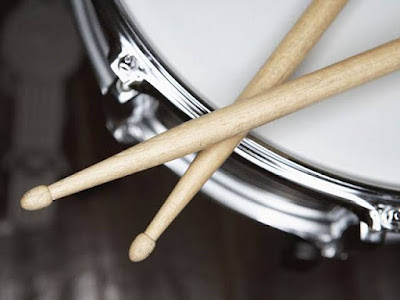Considering the Right Drumsticks
There are many types of drumsticks available in the market with different sizes, shapes and compositions in different materials.
Considerations of the Materials Used in the Composition of Drumsticks Most drumsticks are made of wood. Rosewood, maple, hickory and Japanese oak are most popularly used because they are very hard, heavy and durable. Rosewood is hard-structured and durable, while maple is light and soft.
Apart from wooden drumsticks, there are also options made of carbon fibre, ergonomic sticks, plastic, graphite, fibreglass, aluminium or light-emitting diodes (LEDs) that light up when hit.
Take a look at the Drumstick Basics (Tips, Shoulders, Shaft, Butt) Drumsticks come in a variety of sizes, weights and balances, all of which share a similar basic design.
These characteristics are the shoulders (tapered area), tip (which beats the drum head), buttocks (lower end), and shaft (handheld straight area). The sticks with rounded barrels and pointed ends are the most popular drumsticks on the market.
The olive tip provides complete low notes and enhanced durability, the spin is bright and focused, both the tuning and the pointed tip provide a medium tone. However, the end of the barrel is more focused due to its reduced contact area.
Although drumstick sizes are varying from manufacturer to factory, the internationally accepted drumstick numbering system devised in the 20th century gives buyers a rough idea of what to buy. In general, there are three categories which are denoted by the letters S, A and B.
Notation A stands for orchestra, B for band and S for street Class A is the lightest and is primarily designed for big bands whereas B was originally designed for symphonies. The third category, S stands for marching band and is designed as the largest and heaviest drumstick on the market. The accompanying numbers refer to the circumference of the drumstick. Common numbers are two, five and seven. The larger the number, the smaller the circumference of the drumstick.
Five A's are the most popular drumsticks and are perfect for standard beginners. However, the 7A is ideal for younger drummers who need lighter drumsticks. Experienced and hardcore drummers, who want to hit the drums hard, can try 2B or 5B.
Hope you have an idea about the drum sticks that you will use, click here for a review of best drum sticks for kids.



Comments
Post a Comment